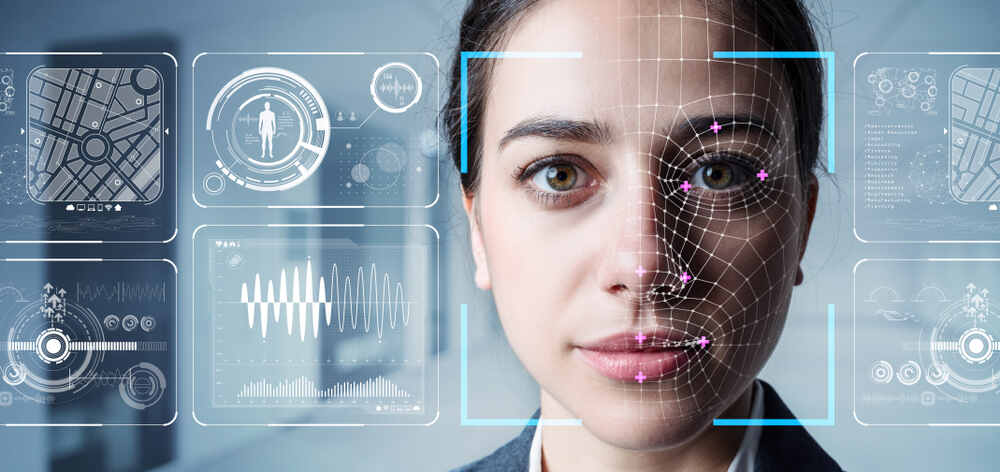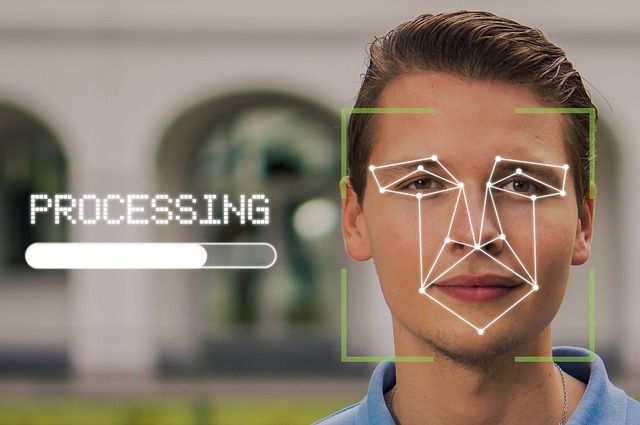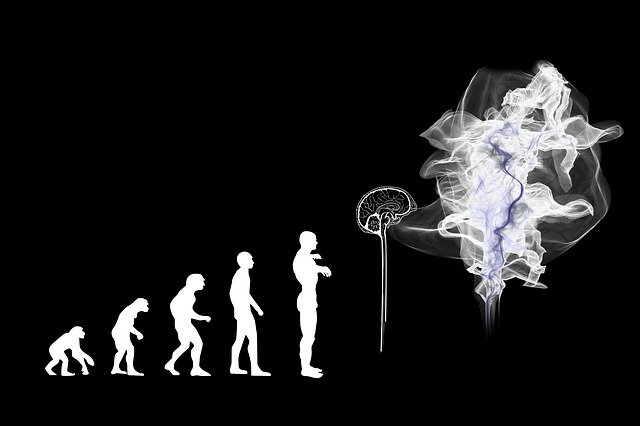Are Deepfakes Created Legally? Top 12 Celebrity Deepfake Illustrations
Deepfakes use deep learning artificial intelligence to replace the likeness of one person with another in video and other digital media. AI-generated celebrity deepfake videos are becoming more common (and convincing). Is it legal to create deepfakes? Here’s why we should be worried about this tech.

Although the public usually has a poor understanding of deep fakes, many people are beginning to dread them constantly. It is not easy to believe anything you read these days. Deepfakes are now making it more difficult to believe what you see. If we ever expect to lessen the harm that deepfakes may cause, people must become informed about their reality about them. We provide a detailed analysis of celebrity deepfakebelow, along with tips on recognizing them and explaining why they are harmful.
As if there weren't enough of them, deepfakes are making their way into advertising, displaying horrifying impersonations of your favorite celebs, with or without their consent.
Early in the fall, Bruce Willis's management denied rumors that the actor had agreed to be deeply involved in upcoming films. Pandora's box was unlocked a year earlier when a Russian telecom business used an action hero in a TV commercial (with permission).

The Wall Street Journal has reported that advertising companies use dummy versions of the best celebrities deepfake, including Tom Cruise, Leonardo DiCaprio, and Elon Musk. The last three celebs have yet to consent to participate.
What Makes It a "Deepfake"?
A relatively new technology is deepfakes.
The word was coined by combining the phrases "deep learning" and "fake." Deep learning is the ability of a certain kind of artificial intelligence (AI) called a neural network to perform mathematical and physical operations on enormous amounts of data without the aid of a human. In other words, artificial intelligence can do jobs with little to no user input while learning and processing enormous amounts of data fast.
Deep learning is a component of machine learning, a branch of artificial intelligence that enables computer systems to learn without human intervention.
A shallowfake, in contrast, is the result of someone manipulating the face and body of another using non-deep learning techniques. For instance, people can produce deepfakes celebrity persuasive content using straightforward video editing programs.


Celebrity Deepfake Endorsements in Digital Material
On social media platforms, people have also employed celebrity deepfakes, proving the validity and widespread application of the underlying method. Early in 2021, a Belgian digital AI artist going by the handle @deeptomcruise worked with a Tom Cruise impersonator to create very convincing videos of "Tom Cruise." These films, which received hundreds of millions of views, featured "Tom Cruise" doing strange things like cleaning up industrial waste or tripping and making a jokeabout the Soviet Union in a store. A deepfake of Harry Styles begging for more strawberries appeared on TikTok last year as a musical tribute to his song Watermelon Sugar.
A person or business should carefully consider with legal assistance if it is permissible to create a celebrity deepfake for media content. It must consider several crucial legal bases before publishing content featuring deepfake celebrities, including whether the material is protected free speech, whether the celebrity's publicity rights have become widely known, and whether a fair use defense to a copyright infringement claim is available. Otherwise, like in other circumstances, consent is required in order to use the talent's likeness.
Lawmaking is Lagging
Although most celebrity deepfakeare intended to be just fake enough to be humorous, the consequences of using technology to mimic celebrities, whether approved or not, are not something to be laughed at.
Ari Lightman, a digital media and marketing professor at Carnegie Mellon University, told the WS, "We're having a hard enough time with misleading information. Deep fakes, which are more convincing than ever, are available now.
Additionally, US legislation has yet to really keep up, particularly regarding the use of deepfakes in advertisements. Even though some corporations sought legal advice and incorporated disclaimers, this doesn't change the reality that they're abusing a highly ambiguous legal framework. The advantages of utilizing deepfakes to attract attention, whether favorable or unfavorable, exceed the danger of being sued by such enormous celebrities.

According to Aaron Moss, chief of the litigation section at the law firm Greenberg Glusker, "a lot of these corporations purposely step over the line to almost mock the celebrities they're targeting."
Even if a celebrity wanted to target these businesses, it could be challenging due to the prevalence and simplicity of deepfakes to do so.
Considering Relevant Legislation
The legal environment for celebrity deepfake has been quickly evolving in the US. An individual or organization should consider recent state legislation addressing synthetic and digitally modified material.
New York passed legislation prohibiting the use of a "dead performer's digital duplicate" in content for 40 years after the death of the performer if it is "likely to mislead the public into thinking it was permitted" in November 2020. It may forbid deepfakes in films like Anthony Bourdain's Roadrunner. Despite Ottavia Bourdain, the widow of the renowned chef, claiming that she did not consent to such usage, the film's director controversially used deepfake technology to construct three lines that brought Bourdain's "voice back to life" to finish the production after his passing.
A law banning the distribution of bogus "deepfake videos" intended to damage politicians or affect the electorate within 30 days of an election was approved in Texasin September 2019. The next month, Californiaenacted a bill with the addition that the period in question had to occur within 60 days of an election. The deepfake hosting sites will also need to consider compliance difficulties with charges of dishonesty.

Identifying a Profound Fake
Users should arm themselves with as many detecting abilities as possible as one of the most robust defenses against damaging deepfakes.
Typically, something will feel "odd" as the first indication of a deepfake. If so, take a closer look at the subject's face and consider whether it is excessively smooth or odd cheekbone shadows are present.
- Is the face excessively smooth, or do the cheekbone shadows seem odd?
- Do the mouth and eyelid motions appear forceful, jerky, or in any other way unnatural?
- Does the hair appear to be fake? The original appearance of hair is difficult to retain with current deepfake technologies (especially facial hair).
Additionally crucial in context:
- Consider what the character is doing or saying. Or are they acting in a pornographic video while denouncing vaccines? Relevant here will be anything that looks out of character or goes against common knowledge.
- Use specific keywords to look for the video or the person in it online because many alleged deepfakes will have previously been disproved.
- Consider the source's credibility; does it appear reliable? Is the poster's account verified if you use a social networking site?
Many concepts are fundamentals of digital literacy and call for sound judgment. Other more intricate methods exist to identify celebrity deepfake when common sense fails. You may also snap a screenshot of the video as it is playing and use Google's reverse image search to check if there is a public transcript of what is being said. Media sources frequently cover remarks from prominent personalities and politicians within 72 hours. Run any suspicious films directly containing a "colleague" or "family" by that person. It can disclose whether an initial idea of the clip exists, which you can then compare to the shady one.
Finally, share your discovery of a deepfake if you are successful in doing so. Always press the report button.


An AI Tool that Can Identify Celebrity Deepfake that are Phony
An artificial intelligence (AI) algorithm has been developed by two researchers from the Johannes Kepler Gymnasium and the University of California, Berkeley that can distinguish whether a video clip of a famous person is a deepfake or original.
They then tested their technique by examining several celebrity deepfake videos alongside actual videos of various individuals. They discovered that their method perfectly distinguished between genuine and fraudulent items. It was also influential in establishing the falsity of the Zelenskyy video.
Is It Illegal to Create a Deep Fake?
The gist of the reply is that it depends on the nation, and if in the US, the state, and how it was utilized.
After making several arrests, mainly of minors, South Korean police officers declared the creation of deepfakes to be a felony on May 2, 2021. The creation or dissemination of profound false information is a severe felony, according to a police officer.
Working for a large legal firm, Hogan Lovells reveals that many European nations do not have laws against deepfakes.
With the 2019 TX SB751, which expressly forbids and criminalizes the development of deepfakes, particularly in the context of a political election, Texas became the first state in the United States to address the legality of deepfakes. In 2019, California took additional steps to combat deepfakes by "prohibit[ing] the use of deepfakes in election materials by expressly outlaw[ing] the malicious manufacture or distribution of’ materially false' campaign materials within sixty days of an election."
These, however, were just short-term solutions for specific situations.
The National Defense Authorization Act (NDAA), which was passed in 2021, recently "asked[ed] for proposals" that would serve as the cornerstone for federal controls of such media. The NDAA mandates that for the following five years, National Security officials and officers must produce yearly reports on deepfakes. These studies are meant to highlight the potential damage deepfakes might cause, including everything from fraud to foreign influence operations. To counteract the political and personal concerns posed by deepfakes, Pentagon employees are collaborating with several of the country's top research universities.
The Top 12 Celebrity Deepfake Instances
1. Morgan Freeman
This Morgan Freeman deepfake is among the most ominously convincing deepfakes. Last year, the Dutch deepfake YouTube channel Diep Neppublished the video for the first time, attributing the idea to Bob de Jong and the (mighty) voice acting to Boet Schouwink (by using celebrity deepfake voice generator).
After a year, the video is still incredibly stunning and terrifying, as we witnessed when it reappeared on Twitter. How can this technology NOT be used in the 2024 election? When it comes to actual, pervasive (but invisible) powers of identity manipulation and whole-cloth digital identity construction, the consequences of which are far-reaching & bone-chilling. Soon we'll see that even this is practically child's play.
2. The Jim Carrey Film The Shining
Deepfake makers frequently use bizarre actor/movie crossovers; you can find many of these on YouTube. Jim Carrey plays Jack Torrence in a series of movies highlighting the most crucial scenes from the 1980 movie The Shining in this horrifyingly effective cut. It's horrifyingly believable, making us yearn to watch Jim Carrey in a horror movie. His heightened facial emotions would be ideal.
The makers' Ctrl Shift Face have posted a before and after of the Jack to Jimmy transformation if you want to witness a more accurate comparison of the Deepfake alteration to the original.
3. Spider-Man: No Way Home, but it's Tobey Maguire
Every Spider-Man fan has a favorite actor, and if Tobey Maguire is your favorite, you'll like this specific cut. Tom Holland's face was swapped out for Tobey Maguire's in the Spider-man: No Way Home trailer by well-known deepfake maker Shamook. It has a minor impact, yet it's so expertly done that you hardly notice anything has changed.
We wonder what the future of movies looks like with this editing style. Imagine having the option to pick the leading man in the movie you're watching. Crazy.
4. Pulp Fiction, starring Jerry Seinfeld
Jerry Seinfeld is inserted into one of the most iconic sequences from Pulp Fiction in this humorous and expertly produced creation by DesiFakes, and it works beautifully. The audio editing is crucial here, with everything being timed perfectly, even the inappropriate synthetic laughter, the jingle, and the credit roll. The expressions on their faces resemble ones from a Seinfeld episode. Deepfakes were explicitly designed for situations like these.
5. Tom Cruise's Deep Imitation of TikTok
There is already a TikTok account dedicated to Tom Cruise deepfakes since deepfakes have advanced so much in recent years.
Although some of @deeptomcruise's films still have an uncanny valley quality, his mastery of the actor's voice and mannerisms, combined with the use of quickly evolving technology, has led to some of the most convincing deepfake instances to date.
Videos of Cruise performing various activities, like washing his hands and playing golf, are available online. The account's description on TikTok is as follows: "Parody. also, youthful"

6. The Mandalorian Deepfake Luke Skywalker
Star Wars fans went wild when Luke Skywalker appeared in The Mandalorian's season two finale. However, when the space dust finally cleared, fans weren't slow to criticize the computer recreation of a younger Mark Hamill for what they saw to be shortcomings.
YouTuber Shamook attempted to deepfake a Luke Skywalker from the Return of the Jedi once more, with spectacular results.
It was eventually established that Shamook had been employed by none other than Industrial Light and Magic, the illustrious visual effects studio that contributed to the realism of the Star Wars universe. The far-off galaxy is now being shaped using deep-fake technology.
7. The Deepfake Keanu Reeves on TikTok
Cruise is not the only celebrity deepfake with a TikTok fan base. Since then, deepfake Keanu Reeves and many other celebrities have joined him on the platform. Unreal Keanu has amassed an astounding 7.4 million followers, who appear to like his movie allusions, dancing (it's TikTok), and jokes about cohabitating.
This deepfake celebrity, like Cruise before, is being utilized for laughs and isn't being sold off as genuine. Despite the humor, it illustrates the dangers deepfakes bring to celebrities. On the one hand, technology may make it possible for celebrities to market their image to companies without having to bother recording a commercial or attending a picture session. On the other hand, there have already been tales of dishonest companies promoting their goods using deep fakes without the consent of celebrities.
8. Kim Joo-Ha, A Korean Newscaster
Many deepfake examples are humorous parodies or experiments meant to push the boundaries of deep learning technology. Late last year, a deepfake of its news presenter Kim Joo-Ha was shown to viewers on the Korean television network MBN.
The newsreader would be a fake, as the channel has previously informed viewers, and Kim Joo-Ha is still employed. Though MBN stated that it would continue to use deepfake for some breaking news reports, some have expressed concern that newsreaders may become obsolete because the South Korean company DeepBrain AI, formerly known as Moneybrain, has stated that it is looking for media buyers in China and the US.
9. Wonder Woman
Remakes and reboots are still a huge component of the modern cinema industry. When fresh performers are cast in prominent roles, comparisons between various performances are unavoidable.
By substituting one actor for another for a scene, deepfake technology has made it possible for users to go beyond simple comparisons, showing both parallels and contrasts that are fascinating to watch.
In this stunning example from DeepFaker, actress Lynda Carter from the venerable Wonder Woman television series from the 1970s is put into the reinvented setting and outfit of Gal Gadot's big-screen Wonder Woman.
10. The Snoop Dogg Doggy Dog Tarot Readings are a Scam
Viewers would call in to have very shady psychics tell them their future, and phoneline fortune telling used to rule late-night TV in many cities.
Snoop Dogg, a West Coast gangster rapper, seemed the ideal choice to feature in it because it was a dubious business. It was Brian Monarch that created this funny deepfake.
11. Celebrity DeepfakeRoundtable
The current state of the entertainment industry is experiencing a fundamental change as Netflix, and other streaming services compete for viewers. In light of this, Collider created this hilarious deepfake featuring the voices of Tom Cruise, Robert Downey Jr., George Lucas, Ewan McGregor, and Jeff Goldblum debating streaming and the state of the movie industry. This video is one of our favorites, not only because it is so convincing but also because it is pretty funny. It is "scary excellent," as one commenter put it.
12. Donald Trump Joins the Cast of Breaking Bad
In this video, Donald Trump is introduced as corrupt attorney Saul Goodman using a clip from the wildly successful Breaking Bad television series. In the sequence, Goodman teaches Aaron Paul's character Jesse Pinkman the fundamentals of money laundering. Paul is replaced by Donald Trump's deep-fake son-in-law Jared Kushner to give the satire an air of intimacy and a dash of authenticity.
The parody's crew, Ctrl Shift Face, utilized DeepFaceLab to construct the faces of Trump and Kushner frame by frame. Stable Voices, a customized AI model trained on actual speech samples, produced the voices that complete the scene.
One of the persons who has undoubtedly been the target of the deepest fakes, frequently with hilarious results, is Donald Trump. The South Park creators had intended to turn their Sassy Justice into a full-length motion picture (see below). Although Deep Fake: The Movie is on hold for now, this is a preview of what it may look like.
